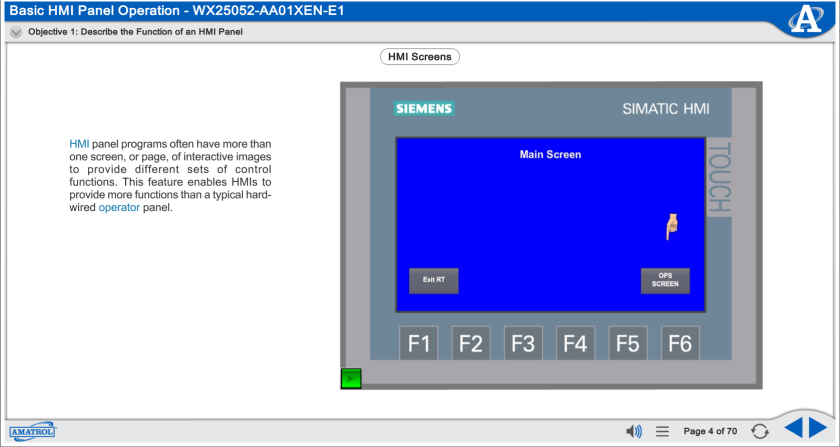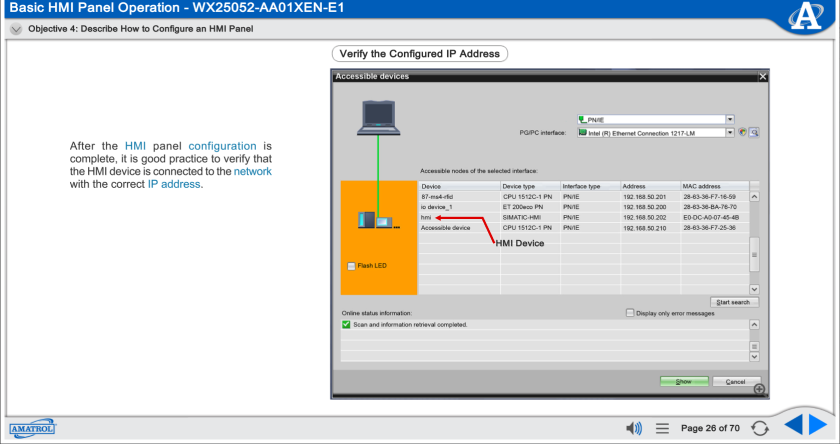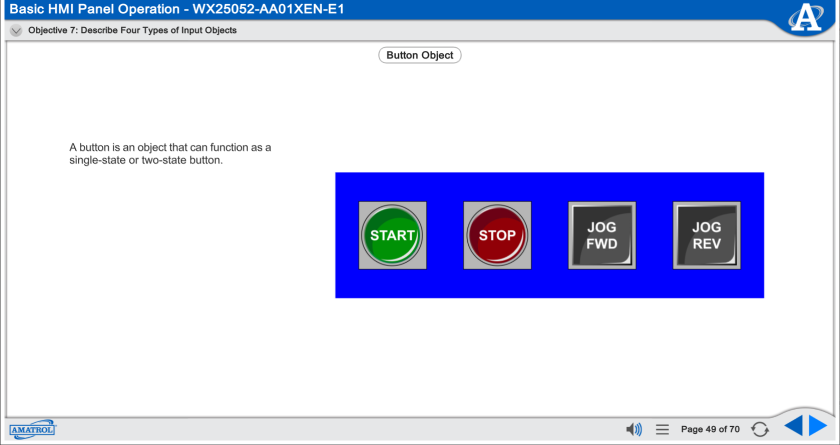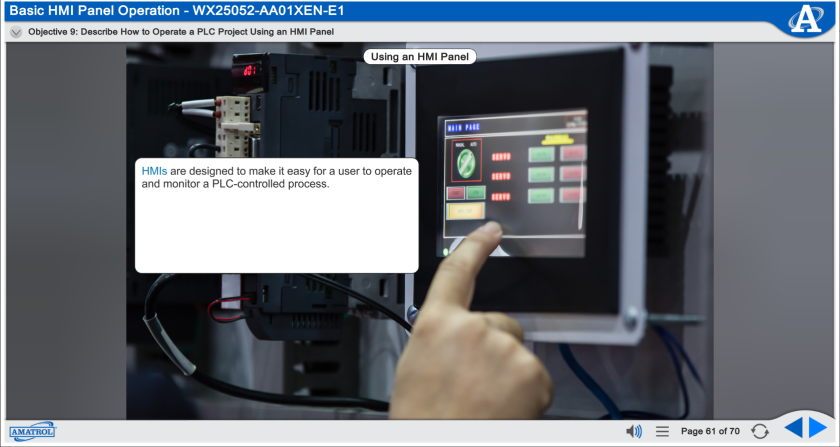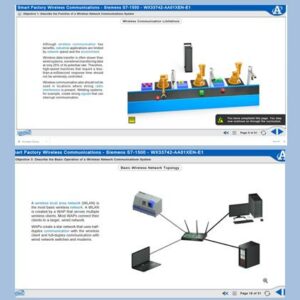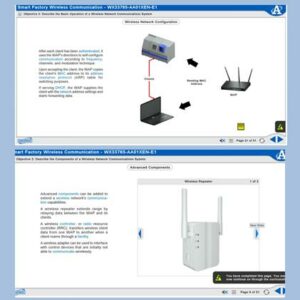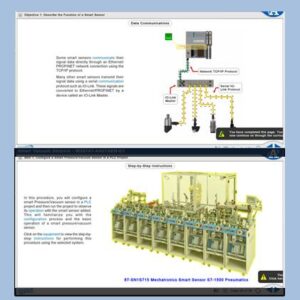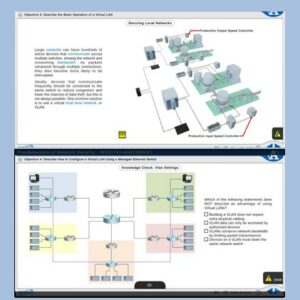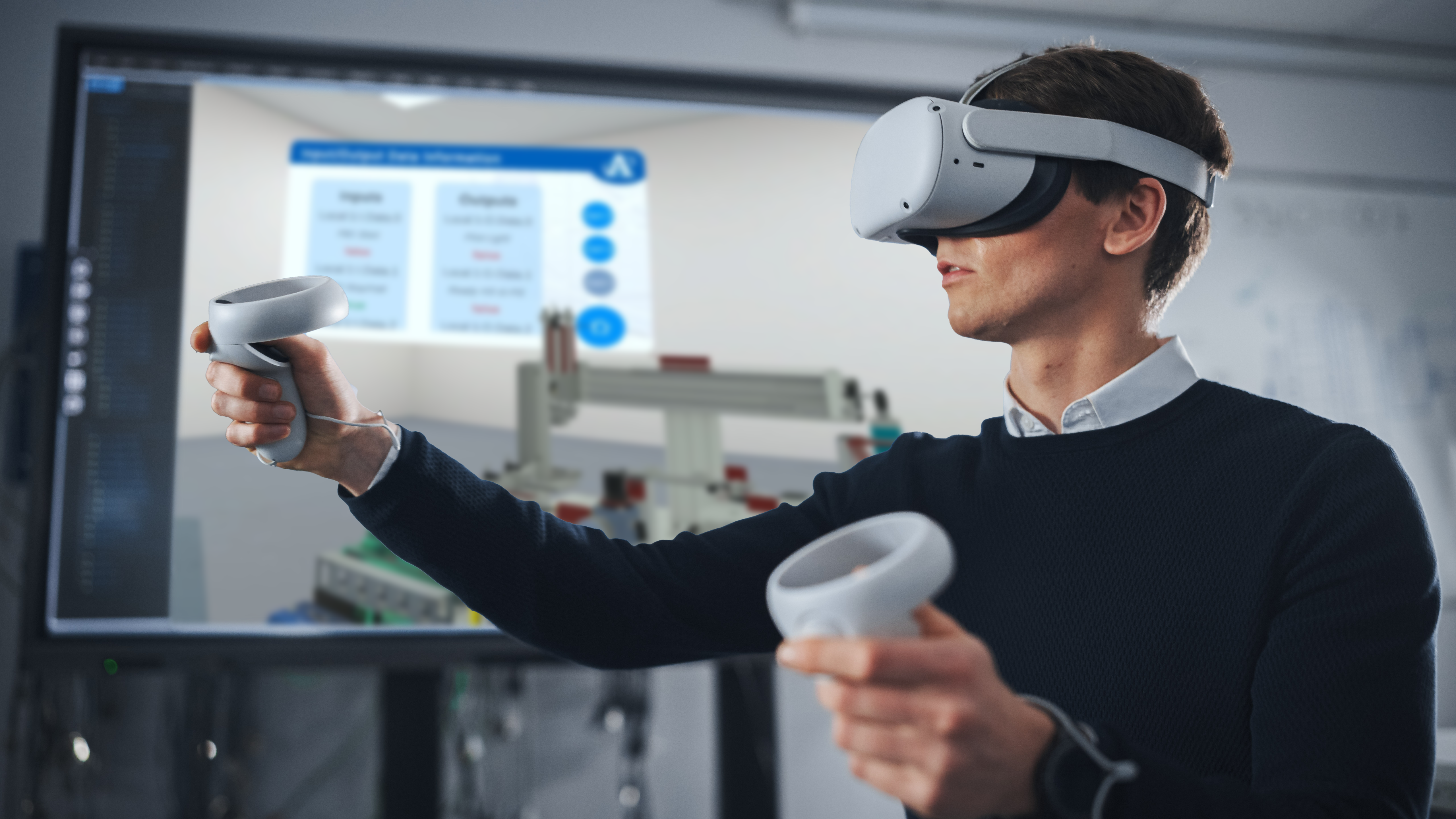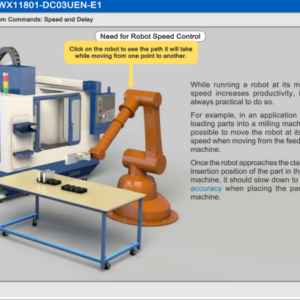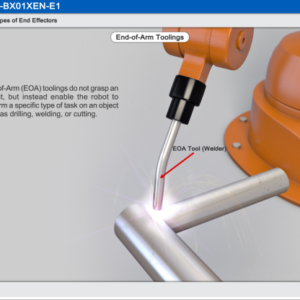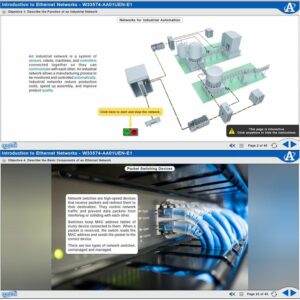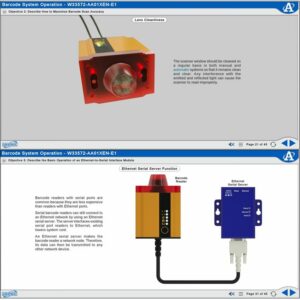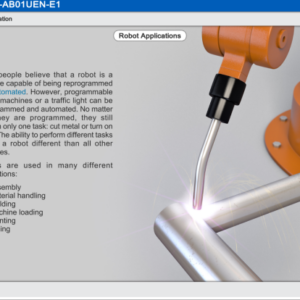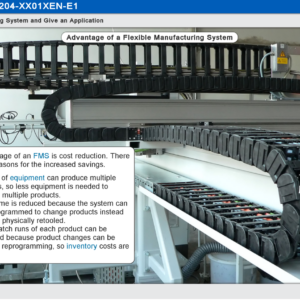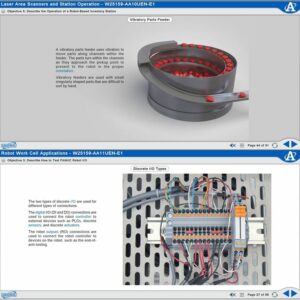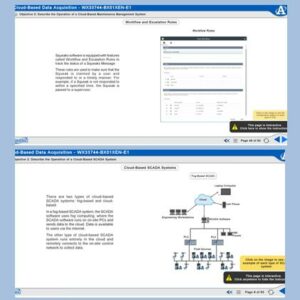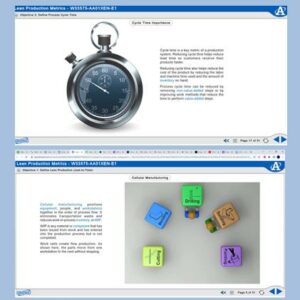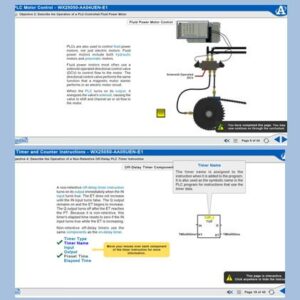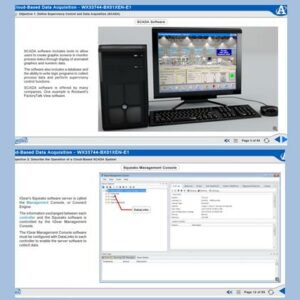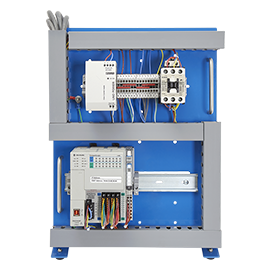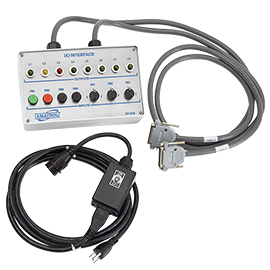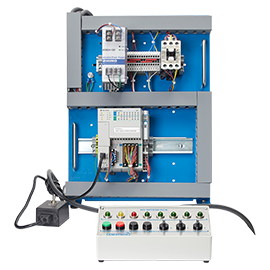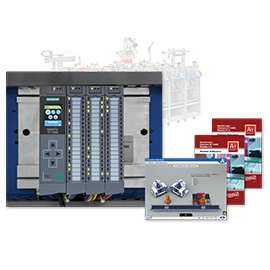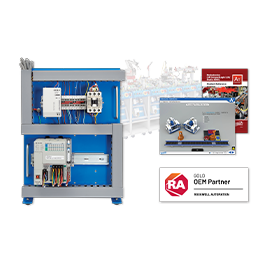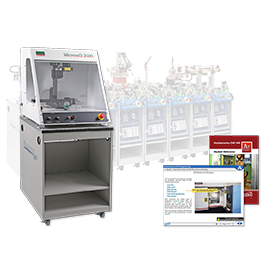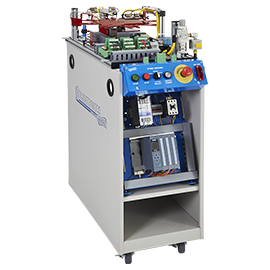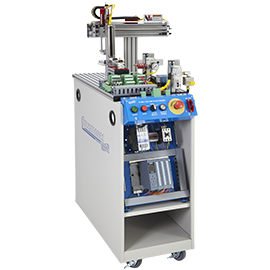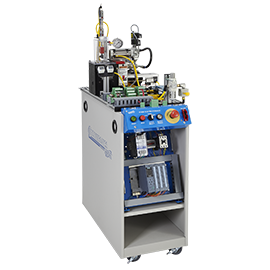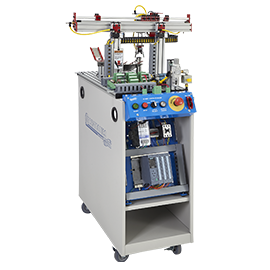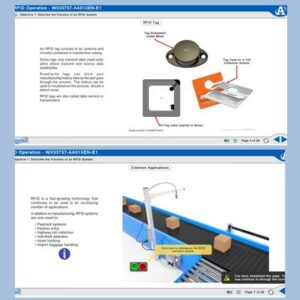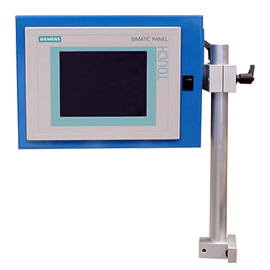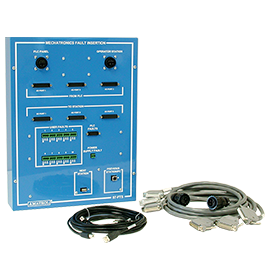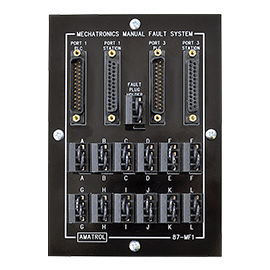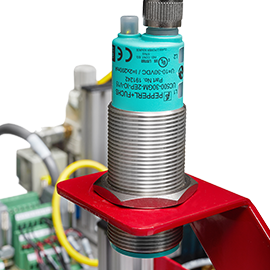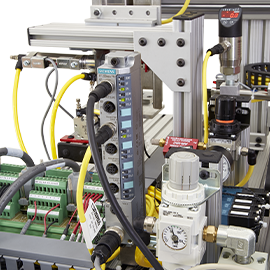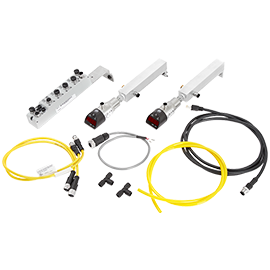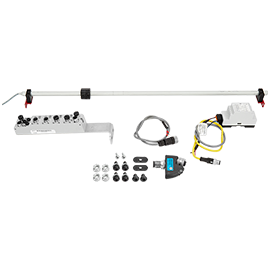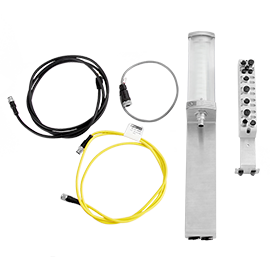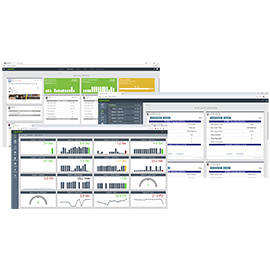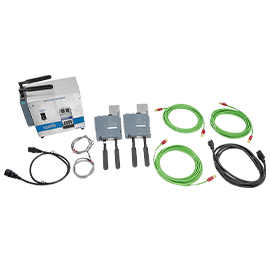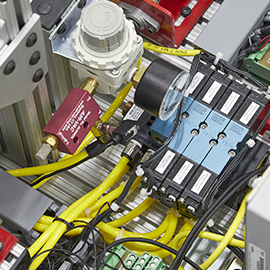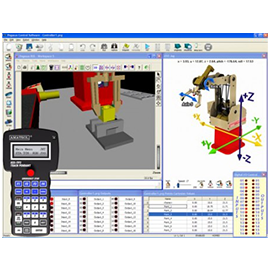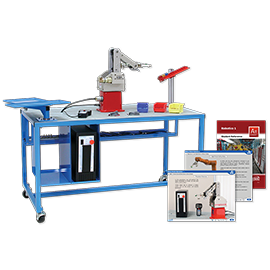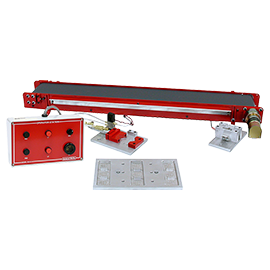Amatrol’s Siemens PLC Programming eLearning curriculum is unique in that it thoughtfully combines in-depth theoretical knowledge with practical, hands-on skills. This powerful combination of knowledge and skills solidifies understanding and creates a strong foundation for pursuing more advanced skills.
For example, the eLearning course covers important topics, such as:
Automation Operations
In this segment, learners begin with an introduction to mechatronics, then study pick and place automation systems, flexible manufacturing systems, and automated manufacturing processes. The course then moves into control system concepts and covers basic sequencing control systems and the types of manual and automatic discrete input and output devices. The next topic, mechatronics safety, includes operator safety rules and electrical and pneumatic lockout/tagout systems. Finally, the segment covers machine operator functions by explaining the role of a modern automated machine operators, the function of a basic operator panel, stop function operation, and automated machine operation.
Pick and Place Feeding
This station operation lesson begins by discussing the types of material feeding systems, powered parts feeder operation, and pick and place pneumatic manipulator operation. Next, the segment covers component adjustment through topics like how to adjust a vacuum gripper, how to adjust a vacuum switch, and how to adjust a shock absorber. The segment continues with module sequencing by discussing powered parts feeder sequence of operation and a 2-axis pick and place manipulator sequence of operation. Finally, station sequencing is discussed through topics like pick and place feeding station sequence of operation and pick and place feeding station with manual/auto/reset functions operation.
Indexing
This segment begins by discussing the operation of an indexing material processing station and a stepper motor index table and how to adjust fiber optic sensors and capacitive sensors. The segment continues by covering how to program a stepper motor controller, how to adjust a homing sensor, and the proper sequence of operation for a part transfer module, a stepper motor index table, and a parts orientation module. The segment concludes with the operation of an indexing station with manual/auto/reset functions.
Multiple Station Control
This segment covers discrete I/O handshaking, system startup/halt, system stop/reset, and FMS programming. Learners begin by studying the function of discrete I/O handshaking, how to connect PLC discrete I/O handshaking lines, and the operation of a PLC program that uses discrete I/O handshaking before moving on to studying how a PLC program uses discrete I/O handshaking for multiple station startup and halt. They will then learn about a multiple station emergency stop circuit and how a PLC program uses discrete I/O handshaking for multiple station cycle stop and reset. Finally, learners study how a PLC program uses discrete I/O handshaking for multiple station FMS and quantity production.
